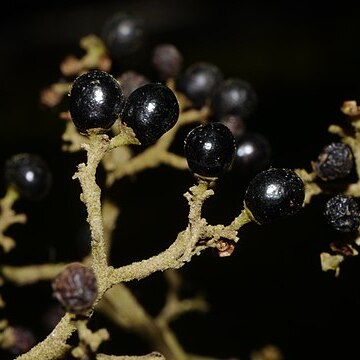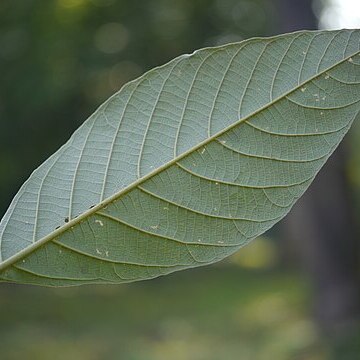A tree. It grows about 20 m tall. The bark is dark brown, rough and thinly corky. The leaves are opposite and 9-30 cm long by 4-14 cm wide. They are sword shaped and with soft hairs on both surfaces when young. The flowers are light purple. They have a smell. The fruit is fleshy with a stone inside. The fruit is purplish black when ripe.



